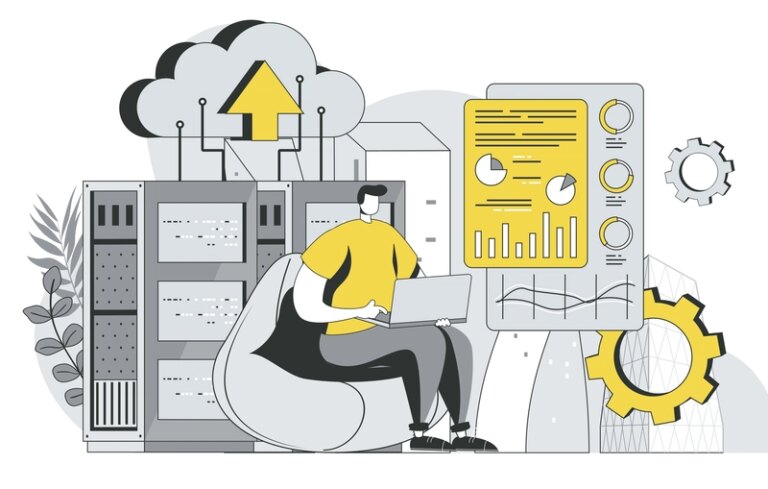Multi-Factor Authentication (MFA) Bypass – Flaws in MFA Implementation Allow Attackers to Circumvent It
Introduction
Multi-Factor Authentication (MFA) is widely regarded as a critical security measure to protect against unauthorized access. By requiring users to provide multiple forms of verification—such as passwords, SMS codes, biometrics, or hardware tokens—MFA significantly reduces the risk of account compromise.
However, MFA is not foolproof. Attackers have developed sophisticated techniques to bypass MFA, exploiting weaknesses in its implementation. This blog explores the common flaws in MFA systems, real-world attack scenarios, and best practices to mitigate these risks.
Table of Contents
- Understanding Multi-Factor Authentication (MFA)
- What is MFA?
- Types of MFA Factors
- Why MFA is Important
- Common MFA Bypass Techniques
- Phishing Attacks (MFA Fatigue, Evilginx)
- Session Hijacking & Cookie Theft
- SIM Swapping Attacks
- Man-in-the-Middle (MITM) Attacks
- Exploiting OAuth & Social Login Flaws
- Brute Force & Token Prediction
- Backup Code Abuse
- API & Endpoint Vulnerabilities
- Real-World MFA Bypass Attacks
- Case Study: Uber Breach (2022)
- Case Study: Twilio & Cloudflare Phishing (2022)
- Case Study: Microsoft 365 MFA Bypass
- Why MFA Implementations Fail
- Weak Second Factors (SMS, Email)
- Poor User Awareness & Social Engineering
- Misconfigured MFA Policies
- Lack of Adaptive Authentication
- Best Practices to Secure MFA
- Enforcing Phishing-Resistant MFA (FIDO2, WebAuthn)
- Implementing Conditional Access Policies
- Monitoring & Detecting Anomalous MFA Attempts
- Educating Users on MFA Security
- Using Hardware Security Keys
- Future of MFA & Emerging Solutions
- Passwordless Authentication
- Behavioral Biometrics
- AI-Driven Adaptive MFA
- Conclusion
1. Understanding Multi-Factor Authentication (MFA)
What is MFA?
MFA requires users to provide two or more authentication factors before granting access. These factors fall into three categories:
- Something You Know (Password, PIN)
- Something You Have (SMS Code, Authenticator App, Hardware Token)
- Something You Are (Fingerprint, Face Recognition)
Why MFA is Important
- Prevents credential stuffing attacks
- Reduces risks from password breaches
- Adds an extra layer of security beyond passwords
However, MFA can be bypassed if not properly implemented.
2. Common MFA Bypass Techniques
1. Phishing Attacks (MFA Fatigue, Evilginx)
Attackers use fake login pages to steal credentials and MFA tokens. Tools like Evilginx intercept real-time MFA prompts.
- MFA Fatigue Attack: Bombarding users with MFA push notifications until they accidentally approve.
2. Session Hijacking & Cookie Theft
If an attacker steals session cookies, they can bypass MFA entirely.
- Browser exploits (malware, XSS) steal cookies.
- Man-in-the-Browser (MitB) attacks capture sessions.
3. SIM Swapping Attacks
Attackers trick telecom providers into transferring a victim’s phone number to a new SIM card, intercepting SMS-based MFA codes.
4. Man-in-the-Middle (MITM) Attacks
Real-time interception of MFA codes via phishing proxies (e.g., Modlishka, Nitroba).
5. Exploiting OAuth & Social Login Flaws
- OAuth token theft allows attackers to bypass MFA.
- Misconfigured SSO integrations can skip MFA.
6. Brute Force & Token Prediction
- Weak TOTP (Time-Based One-Time Password) implementations allow brute-forcing.
- Predictable MFA tokens (if not properly randomized).
7. Backup Code Abuse
If backup codes are stored insecurely (e.g., plaintext in email), attackers can use them.
8. API & Endpoint Vulnerabilities
Some MFA systems have API flaws allowing attackers to disable MFA or bypass checks.
3. Real-World MFA Bypass Attacks
Case Study: Uber Breach (2022)
- An attacker purchased an employee’s stolen password on the dark web.
- The victim received multiple MFA push notifications (MFA fatigue attack) and accidentally approved one.
- The attacker gained full access to Uber’s internal systems.
Case Study: Twilio & Cloudflare Phishing (2022)
- Attackers used Evilginx to phish employees, stealing credentials and session cookies.
- Bypassed MFA by reusing stolen session tokens.
Case Study: Microsoft 365 MFA Bypass
- Attackers exploited misconfigured OAuth apps to bypass MFA.
- Used legacy authentication protocols (IMAP, SMTP) that didn’t enforce MFA.
4. Why MFA Implementations Fail
1. Weak Second Factors (SMS, Email)
- SMS is vulnerable to SIM swapping and interception.
- Email-based MFA is weak if the email account is compromised.
2. Poor User Awareness & Social Engineering
- Users approve fraudulent MFA prompts due to lack of awareness.
3. Misconfigured MFA Policies
- Some systems allow MFA skipping for certain IPs or legacy protocols.
4. Lack of Adaptive Authentication
- Static MFA (always requiring the same factor) is less secure than risk-based authentication.
5. Best Practices to Secure MFA
1. Enforce Phishing-Resistant MFA
- Use FIDO2/WebAuthn (hardware keys, biometrics).
- Avoid SMS & email-based MFA for high-risk accounts.
2. Implement Conditional Access Policies
- Enforce MFA based on location, device, and behavior.
- Block legacy authentication protocols.
3. Monitor & Detect Anomalous MFA Attempts
- Alert on multiple MFA failures.
- Detect unusual geographic logins.
4. Educate Users on MFA Security
- Train employees to recognize MFA phishing.
- Discourage MFA prompt auto-approval.
5. Use Hardware Security Keys
- YubiKey, Google Titan provide strong phishing-resistant MFA.
6. Future of MFA & Emerging Solutions
1. Passwordless Authentication
- FIDO2 & Passkeys eliminate passwords entirely.
2. Behavioral Biometrics
- Analyzes typing patterns, mouse movements for continuous authentication.
3. AI-Driven Adaptive MFA
- Uses machine learning to detect suspicious logins in real-time.
7. Conclusion
While MFA is a powerful security tool, flaws in implementation allow attackers to bypass it. Organizations must adopt phishing-resistant MFA, enforce conditional access policies, and educate users to mitigate risks.
The future of authentication lies in passwordless solutions, behavioral biometrics, and AI-driven security—moving beyond traditional MFA weaknesses.



